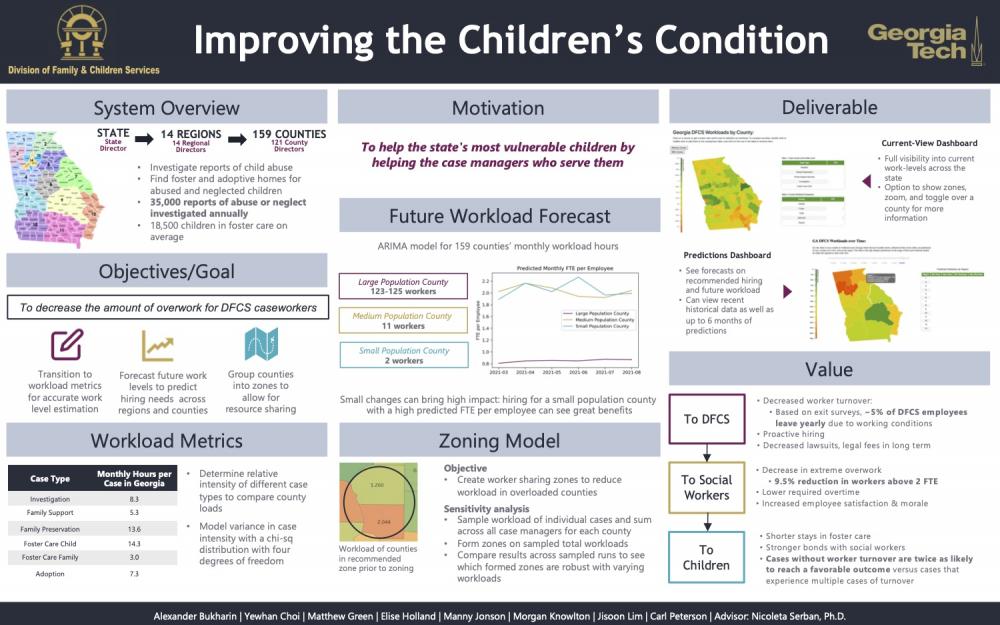Client Context
The Georgia Division of Family and Children Services is responsible for investigating reports of child abuse and finding foster & adoptive homes for abused & neglected children. These operations are carried out at the county level. Georgia’s 159 counties are combined into 14 regions. According to the 2020 State Fiscal Year annual report by the Georgia Department of Human Services, DFCS investigated 35,000 reports of abuse or neglect in SFY20. There were 18,500 children in foster care at any point in time.
Project Objective
When caseworkers are overburdened, both caseworkers and children suffer. Caseworkers cannot spend a sufficient amount of time on each case, which leads to an increased chance of the children experiencing harm without the caseworker noticing. We identified three opportunities to help DFCS decrease the overburdening of caseworkers. The first is switching from a caseload-based (number of cases assigned to a worker) to workload-based (number of hours assigned to a worker) metric that better reflects a caseworker’s burden. The second opportunity is to anticipate caseworker demand so that DFCS can avoid overburdening by hiring caseworkers proactively. The third opportunity is to use existing resources by increasing resource sharing between counties.
Design Strategy
In order to develop the workload metrics, we combined outside research with input from subject matter experts at DFCS to create estimates of the amount of time that investigation, family support, family preservation, foster care, and adoption cases require each month. To help DFCS anticipate caseworker demand, we used time series modeling to forecast monthly workload for each of Georgia’s 159 counties. To validate our model, we compare it to baseline models and found that our model performs better. Using the workload predictions, enhanced hiring measures were provided through additional sensitivity analysis using the confidence intervals of the predictions. Lastly, we used optimization to create worker-sharing zones to reduce workload in overloaded counties. We ran 100 trials of the optimization on simulated workload data and compared the frequency of each zone recommendation.
Deliverables
The deliverables for this project include the creation of workload estimates to better account for case time and intensity, the results from a forecasting model used to predict future work levels, and county pairings (zones) from a resource allocation optimization problem. Based on the forecasting model, DFCS will derive insight into hiring needs up to 6 months in the future, allowing them to hire proactively instead of retroactively. The model can be re-run by DFCS to extend the length of the forecast. The zoning recommendations are a one-time deliverable that allow DFCS to utilize current resources to balance workloads across county borders, thereby mitigating the effects of unexpected turnover. Each of these results are visualized in an interactive data portal that allows DFCS administration to identify presently overburdened areas as well as areas that require current intervention in order to prevent future overburdening. These insights are hosted on a password-protected ISyE web server.


